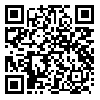Volume 1, Issue 3 (2013)
ECOPERSIA 2013, 1(3): 235-260 |
Back to browse issues page
1- ITC, Enschede, The Netherlands
2- Associate Professor. Director GIS Centre. Lund University, Sweden.
2- Associate Professor. Director GIS Centre. Lund University, Sweden.
Abstract: (5794 Views)
Around 80% of the population relies on agriculture, rice being the staple food. Topography urges farmers to cultivate upland rice. The Chinese interest in rubber latex has stimulated farmers to grow rubber, although the technical knowledge regarding tree management and latex processing is poor. A study was conducted in an area in Luang Prabang province to examine the suitability of upland rice and rubber. The major objective was to make a comparison within and between three suitability evaluation methods, two of which are expert-driven whereas the third one was executed by a group of farmers. For the fuzzy model different membership values were set and weighed using the Analytic Hierarchy Process (AHP) technique. According to the Boolean classification 88% of the study area is suitable for upland rice, and 85% is suitable for rubber. The fuzzy method yielded 89% suitable for upland rice and 88% suitable for rubber. Farmers came up with 37% suitable for upland rice and 14% suitable for rubber. Comparison is made between the different methods. A reasonable agreement between farmers’ suitability maps and the expert-based methods is obtained for the upland rice than for the rubber-based land utilization type (LUT). This can be attributed to the lack of know-how on the latter.
Subject:
Watershed Management & Engineering
Received: 2013/09/7 | Accepted: 2013/09/1 | Published: 2013/11/20
Received: 2013/09/7 | Accepted: 2013/09/1 | Published: 2013/11/20
| Rights and permissions | |
 |
This work is licensed under a Creative Commons Attribution-NonCommercial 4.0 International License. |


